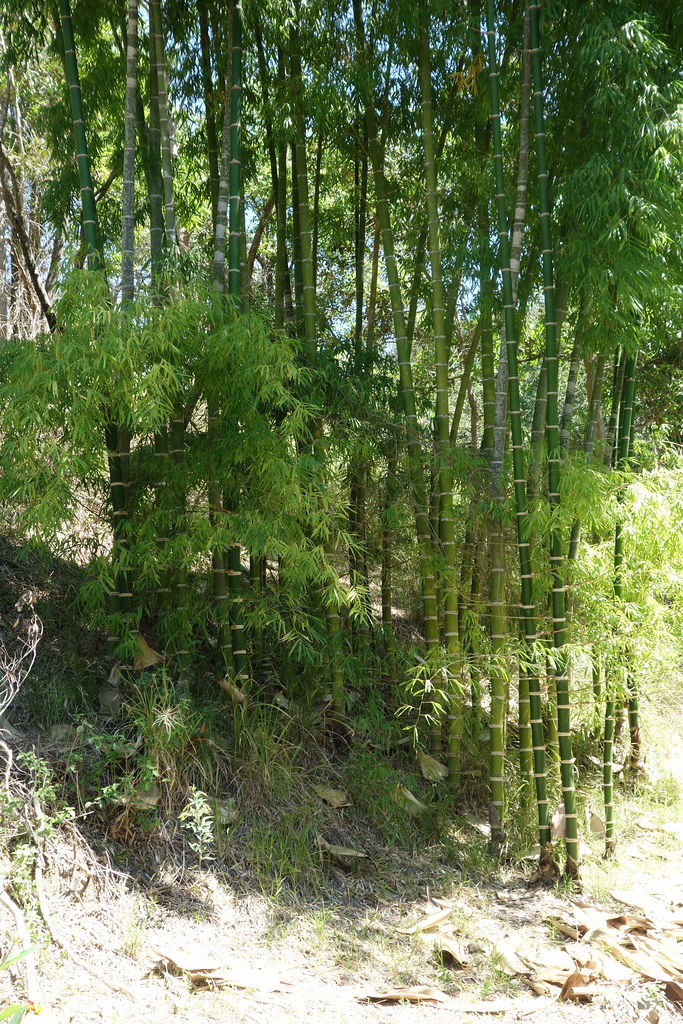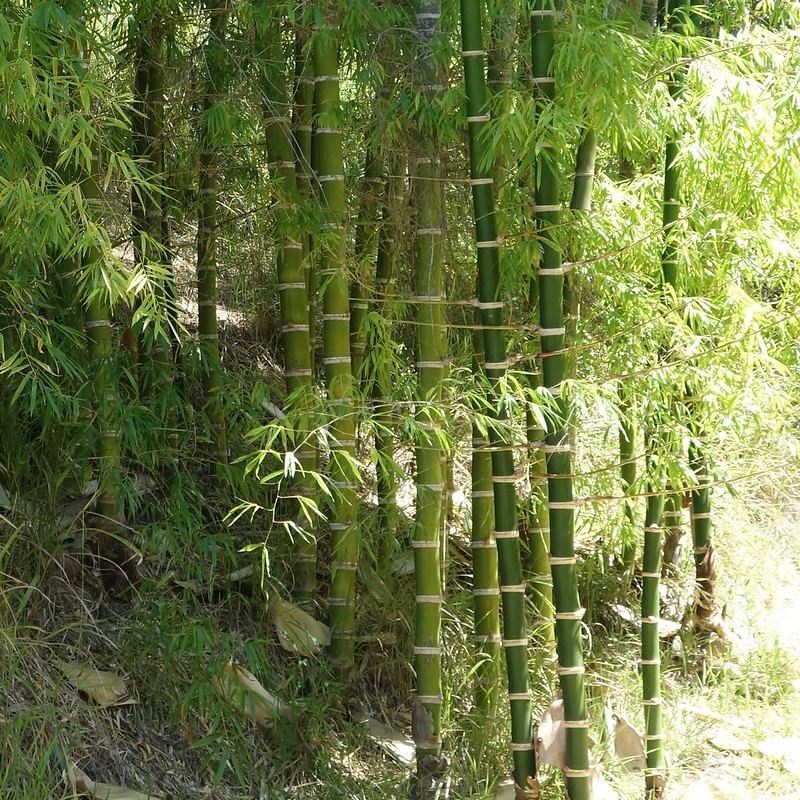…and, bamboo?

“The future of sugar cane is not purely sugar cane”.
This quote comes from a discussion I was having on Friday with a young canefarmer called Scotty, along with his father Allan and my main sugar-guru, Simon. We were sitting in the tray of a ute after having “done the rounds” of the farm. It was getting on towards sunset, each of us was swigging a stubby of Great Northern, and ideas were buzzing around fast. If we’d each had another stubby we might have solved all the challenges of the sugar cane industry, but sadly, being well-behaved citizens, we were conscious of our responsibility to drive home safely – so all that will have to wait.
Scott was saying that there are eleven uses for the sugar cane plant, and currently only about five of them are being exploited. I forget what all the uses are, but I’ll ask around and find out, and list them here when I do.
Besides multiple uses for the monoculture crop, a lot of discussion in the sugar cane industry seems to be about diversification of plant species alongside the sugar. (I explored this a little in a previous blog post). Sometimes this is for soil health, and sometime, also, a secondary income can be generated.
All this talk about diversification reminded me of an experience I had a week ago. We visited Pandurunga Permaculture Farm, near Finch Hatton Gorge. They were having an open day, in the middle of teaching a Permaculture Design Certificate course.
Harmony, one half of Pandurunga with her partner Luke, took us on a tour of the place. Here, diversity is the main thing you notice. Fast-growing pigeon pea shrubs produce an abundance of edible legumes, and by fixing nitrogen they pave the way for some slower coffee trees which are on the rise. Nearby, a plant called “Job’s Tears” starts to emerge. This can be used to create a sort of flour for baking, as well as being eaten as a grain, and used as a bead for kids’ craft workshops.
The gardens surrounding Harmony and Luke’s house don’t grow “crops” per se – rather they are an environment for foraging: flourishing herbs and perennial asian greens well-suited to the hot climate of Mackay; tomatoes ripening and dropping down to re-seed themselves; ground covers and bushes and trees all stacked on top of each other.
And… bamboo!

The photo above shows a very tall, fast growing bamboo used for construction. Harmony and Luke will be cutting it and using it for their own building jobs at Pandurunga. Looking at these incredibly tall stands of bamboo reminded me of all the light-weight scaffolding used in China.
Harmony told us that like sugar cane, bamboo is a grass, and so it could easily grow in the same environment as cane. A lot of the bamboo we use in Australia is imported. There are some interesting facts about bamboo here, and this fella has been growing it in southern Queensland for ages. Does anyone grow it commercially in Mackay?
Like any bright idea, the suggestion of bamboo as a diversification option for sugar cane farms has to jump through multiple hurdles before it gets anywhere.
What kind of machinery do you need to plant and harvest it? How long does it take to grow, and will it pass the cost/benefit test? What do you do with it after you grow it? Who will buy it from you, who will process and distribute it? What kind of soil biology pathogens will it attract if grown en-masse? Can it sequester carbon? Will the bamboo run wild and turn into a pest species? Will it cause more problems than it solves?
My main point in airing this suggestion here is just to get ideas circulating. Shoot it down, debunk it, pick it apart, poo-poo it. Suggest something else, by all means. For every 50 silly ideas, maybe one good one will raise its head.
